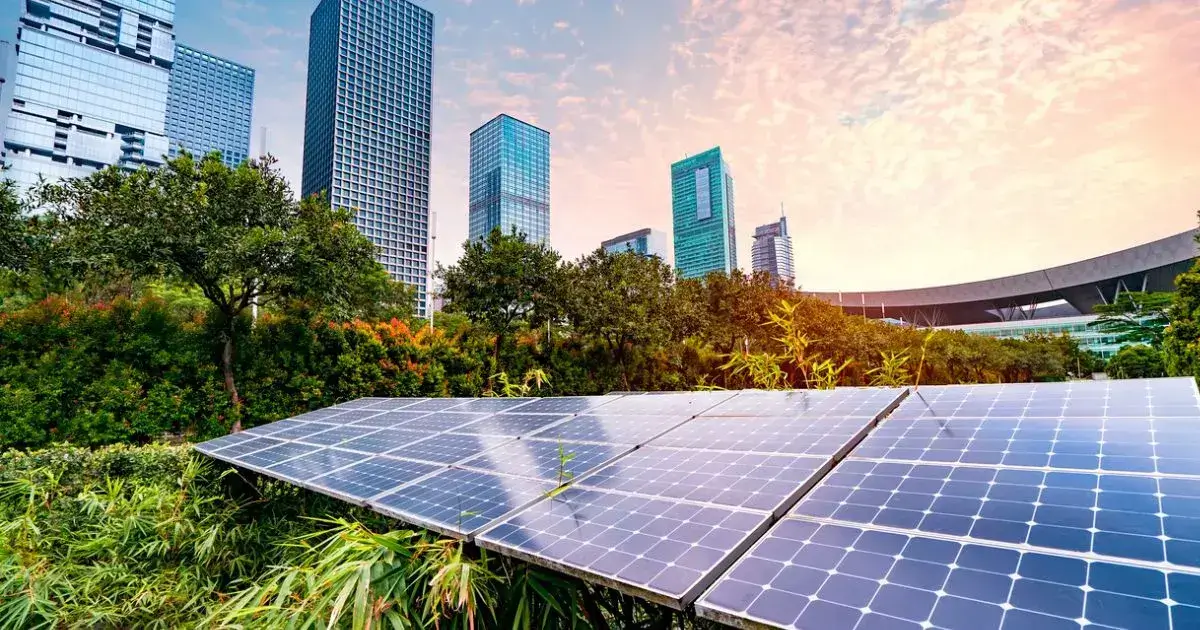The need to fight climate change has inspired cities all over the world to take action by cutting their emissions, reducing their waste, and using green energy.
Urban centers can easily turn into huge sources of pollution, as they inevitably require countless energy-heavy resources — which can quickly turn into waste and emissions.
So it’s important to give credit to the cities that have made a conscious effort to go in the other direction and create eco-friendly systems that have borne fruit.
These are the best and brightest around, according to our tireless research.
What’s on this page?
01 | The greenest cities in the world02 | A breakdown of the world's greenest cities
03 | Why do cities need to be greener?
04 | Are green cities the future?
05 | Methodology
06 | What's the verdict?
Summary: The 9 greenest cities in the world
| City | Population | Best for |
|
Oslo |
717,710 |
Eco-friendly buildings |
|
Reykjavík |
139,849 |
Investment in hydropower and geothermal energy |
|
San Fransisco |
746,481 |
Wide-spread recycling infrastructure |
|
Stockholm |
1,720,000 |
Effective public transport network |
|
Copenhagen |
1,391,000 |
Reducing carbon emissions |
|
Helsinki |
1,347,000 |
Introducing more cycling infrastructure |
|
Sydney |
5,185,000 |
Reducing air pollution |
|
Vancouver |
2,682,509 |
Setting ambitious targets |
|
Edinburgh |
559,000 |
Investing in renewable energy |
A breakdown of the world's greenest cities
Each of the cities in our list has earned its spot — whether it's by implementing effective public transport or by introducing recycling facilities. Want to find out more? Dig into the details below.
1. Oslo
Population (2024): 717,710
Best for: Eco-friendly buildings
Oslo is by far the greenest city on Earth.
72.5% of the Norwegian capital is covered with greenery or eco-friendly buildings — the highest proportion on our list — and it’s pledged to reduce its carbon emissions by 95% by 2030.
Oslo’s public transport is excellent, its air is some of the cleanest in the world, and it runs on 81.8% renewable energy.
That means the city with the highest density of electric vehicles is able to run them on largely green power.
Oslo also benefits from a national drive to reduce plastic pollution, which means Norway now recycles 97% of its plastic bottles every year.
2. Reykjavík
Population (2024): 139,849
Best for: Investment in hydropower and geothermal energy
This beautiful city runs on 100% renewable energy, thanks to its investment in hydropower and geothermal energy.
Largely because of this, residents of Reykjavik enjoy an air quality level that’s among the best on Earth — and it’s likely to get better, with Iceland’s capital committing to becoming carbon neutral by 2040.
Part of this drive is an effort to recycle more, and with an already high recycling rate of 47% (compared to an average of 16% in cities across the globe), Reykjavik is well-positioned to make this a reality.
One area for improvement is the city’s percentage of green spaces and infrastructure, which is one of the lowest on this list, at 27% — but at least it’s surrounded by natural wonders.

3. San Francisco
Population (2024): 746,481
Best for: Wide-spread recycling infrastructure
With a 78% recycling rate, San Francisco is the sustainable champion we all deserve.
The home of the Golden Gate Bridge isn’t the greenest — it has the lowest proportion of green spaces out of any city on this list, at just 13% — but its recycling efforts make up for it.
The city’s renewable energy supply also plays a large part in building its green credentials, as it makes up 84% of its total energy consumption, and its public transit system is excellent.
We gave San Francisco a total score of 87 out of 100 for the quality and future-proofed nature of its public transport, using the latest Urban Mobility Readiness Index.
And having committed to reaching net-zero emissions by 2040, this city by the bay should have an even greener future.
4. Stockholm
Population (2024): 1,720,000
Best for: Effective public transport network
The Swedish capital has the best public transport system in the world, achieving a score of 97 out of 100 in our analysis.
Its air quality is fantastic, its energy is two-thirds renewable, and it doesn’t just want to reach net zero by 2040 — it’s aiming to be climate positive.
Confusingly, that’s the same as being climate negative, in that Stockholm wants to remove more emissions each year than it releases.
The only category Stockholm desperately needs to improve before then is its recycling rate, which is relatively low at 38%.
Nearly all the rest of the trash is sent to be burned for energy, which is a common move among European cities.
This is the only blemish on Stockholm’s record, and it’s a simple one to fix: just build more recycling infrastructure.
5. Copenhagen
Population (2024): 1,391,000
Best for: Reducing carbon emissions
Copenhagen is aiming to be carbon neutral by 2025, in a bold move we wished every city would make.
Denmark’s capital is making excellent progress towards that goal, too — it now uses 83% renewable energy and has a top-tier public transport system, as well as a vibrant cycling culture.
Its 45% recycling rate needs work, but the city has targeted a 70% rate by the end of 2024, which is the kind of ambition every local government should have.
We’d like to see more greenery too, but as with so many places, natural beauty can be found just outside the city limits.
6. Helsinki
Population (2024): 1,347,000
Best for: Introducing more cycling infrastructure
Finland’s capital scored 94 out of 100 for its public transit system, which uses buses, ferries, subway trains, and trams to help its population get around.
And like several other northern European cities, cycling is a way of life here — one which the city’s government is actively encouraging, to meet its goal of increasing the proportion of journeys made by bike to 20% by 2035.
This will help Helsinki reach its main target of net-zero emissions by 2040, as will the fact that 62% of infrastructure in the capital is green — meaning it’s built to exist in harmony with the natural environment.
Residents are already reaping the benefits of this progress, as they can enjoy the third-best air quality of any city on this list.
7. Sydney
Population (2024): 5,185,000
Best for: Reducing air pollution
Sydney has cleaner air than any city on this list, and is second worldwide only to Canberra.
Alongside attractions like the Sydney Opera House and Bondi Beach, the city also boasts hundreds of parks, to the extent that 46% of it is made up of green spaces.
This gloriously sunny destination has also achieved a 65% recycling rate, which is the second-highest proportion on this list, and hugely impressive for a city of more than five million people.
Sydney currently only uses 24% renewable energy, but aims to reach 50% by 2030 as part of an ambitious general goal to hit net zero by 2035.
8. Vancouver
Population (2024): 2,682,509
Best for: Setting ambitious climate goals
68% of Vancouver is green, which means residents are surrounded by this multifaceted city’s eco-friendly credentials.
The most populous place in British Columbia aims to become carbon neutral by 2050 — and in 2015, it was the first in North America to set a target of 100% renewable energy by 2050.
It’s only reached 33% so far, but its ambition is clear and backed up by an excellent plan.
This city on Canada’s west coast also has the third-best recycling rate on this list, at 60%, and it wants to turn itself into a zero-waste city by 2040.
Considering Vancouver has managed to reduce its waste by 36% since 2008, despite its population growing by 15%, we’re confident it’ll get there.
9. Edinburgh
Population (2024): 559,000
Best for: Investing in renewable energy
Scotland’s capital is aiming to reach net zero by 2030, an astonishing goal that would place it as one of the world’s foremost leaders on the climate.
The historic city has already made great strides towards this goal, as shown by its excellent public transport system and air quality, which is among the best in the world.
More than half of Scotland’s electricity comes from renewable sources, and it exports more than twice as much green energy as it uses, sharing its eco-friendly power with the world.
49% of Edinburgh is composed of public green spaces, so you can enjoy the city’s clean air and commitment to eco-friendly causes every day.
Why do cities need to be greener?
Cities are responsible for more than 70% of global CO2 emissions, according to The World Bank — a mind-boggling total of 23.5 trillion tonnes.
So if we’re going to reduce global greenhouse gas emissions to the degree needed to avoid the worst consequences of climate change, cities must get greener — and one of our main focuses must be waste.
We generate more than two billion tonnes of waste per year across the globe, equating to an enormous amount of unnecessary emissions during each product’s creation and disposal.
Cities across the globe have a horribly low average recycling rate of 16% — and that’s only including the minority of places that actually recycle their waste.
70 cities currently throw the majority of their waste into open dumps, including massive metropolitan centers like Baghdad, Moscow, and Mumbai. This has to change, and soon.
Are green cities the future?
Green cities are definitely the future.
More than 700 cities around the globe have pledged to reach net zero by 2050 or sooner, and more are sure to follow as the benefits of going green become increasingly clear.
Thriving green industries are creating millions of new jobs in cities willing to embrace renewable technologies. Eco-friendly policies also lead to more greenery and cleaner air that benefits every single resident.
Turning your city green is also a wonderful opportunity to fix social injustices that would otherwise only be exacerbated by the effects of climate change.
Becoming greener is also unavoidable if you want to ensure your city isn’t at the mercy of climate change-influenced disasters, which are becoming more and more common.
Methodology
We used six factors to work out the greenest cities in the world: their green spaces and infrastructure, public transport, renewable energy, net-zero goal, air quality, and recycling rate (that is, the percentage of waste material that gets recycled).
These categories strongly indicate how much cities care about preserving the environment and tackling greenhouse gas emissions, waste, and pollution.
By using dozens of city-wide, regional, national, and international sources, we were able to find the percentage of each city that’s physically green, recycles, and uses renewable energy, and use those percentages as scores.
We then awarded each city points out of 100 for the other three categories — public transport, net-zero goal, and air quality — based on our research.
What's the verdict?
Cities all over the world are taking steps to go green, by reducing their greenhouse gas emissions, cutting down on waste, and creating green infrastructure from forests to effective public transport.
This will have a huge impact on the climate – but more must be done to lessen the consequences of climate change, and more cities, companies, and countries must jump on board.


-3.png)
.webp?width=380&name=Plastic-on-the-beach%20(1).webp)
.webp?width=380&name=Sustainable%20christmas%20(1).webp)

.webp?width=380&name=Sales%20(1).webp)
.webp?width=380&name=ESG-presentation%20(1).webp)

.webp?width=380&name=Sorting-trash%20(1).webp)

.webp?width=380&name=Buying-online%20(1).webp)
.webp?width=380&name=Ecommerce-business-owner%20(1).webp)
